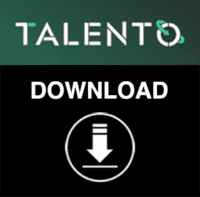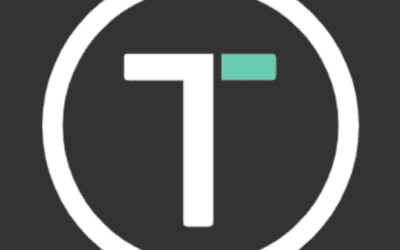“I’ve always said: smart teams will do amazing things, but truly diverse teams will do impossible things.”
– Claudia Brind-Woody, VP and Managing Director of intellectual property at IBM
Organizations that prioritize DEI stand to benefit from improved innovation, employee engagement, and overall business performance. However, achieving DEI at an organizational level is no small feat. It requires a comprehensive and introspective approach, one that goes beyond mere lip service and quotas. It calls for a rigorous assessment of where your organization currently stands and a commitment to continuous improvement. In this article, we explore the importance of assessing diversity, equity, and inclusion at an organizational level and provide you with a downloadable DEI assessment tool to kickstart your journey toward a more inclusive workplace.
Why Assess DEI at an Organizational Level?
Here are some of the main reasons to assess your organization’s current DEI landscape:
- Transparency: An assessment brings transparency to your organization’s current DEI landscape. It provides a clear picture of strengths, weaknesses, and areas that require immediate attention.
- Benchmarking: By evaluating DEI, you can benchmark your organization against industry standards and peers, helping you understand where you stand in the broader context.
- Identifying Barriers: Assessment helps identify barriers to DEI within your organization, whether they’re in recruitment, promotion, or day-to-day workplace interactions.
- Goal Setting: It allows you to set realistic, data-driven goals for improvement, creating a roadmap for your DEI journey.
- Engagement: Involving employees in the assessment process fosters engagement and empowers them to be part of the solution.
Getting Started - DEI Assessment
1. Download the DEI Assessment Tool
To provide a baseline for your team on the most important areas of interest for future DEI initiatives and current overdue needs, download our 10-minute DEI Assessment:
1. Click “Download Resource”.
2. Enter your email address.
3. Submit to download your FREE resource.

DEI Assessment
Send download link to:




DEI Assessment
Send download link to:
2. Gather Data:
After determining key areas of interest, it’s time to gather metrics in those areas to provide evidence of current DEI standards. For example, if your organization currently struggles to diversify its leadership team, you may gather data on the current diversity metrics of the leadership team. Matching your organization’s numbers with regional and national averages can help you determine how far you’re falling short.
3. Conduct Surveys and Interviews:
It’s important for leaders not to assume they know their DEI landscape better than the rest of their team. This is why surveys and interviews are so important during the information-gathering process. Use our assessment tool during interviews or come up with your own questions to ask your team members about their opinions on the current DEI landscape at your organization.
4. Develop an Action Plan:
Based on the assessment results, data, and feedback collected, create a comprehensive action plan aimed at addressing DEI issues and opportunities. Ensure that you establish clear goals, objectives, and strategies to enhance diversity, equity, and inclusion within your organization.
5. Implement and Monitor Progress:
Put the action plan into motion, making certain that the proposed strategies are carried out effectively. Continuously oversee progress by monitoring key performance indicators (KPIs) related to DEI. Regularly evaluate the impact of your initiatives and be ready to adjust your strategies when necessary.
6. Iterate:
Remember that DEI is an ongoing process, so be ready to refine and adjust your strategies over time. Utilize feedback, continuous data collection, and newfound insights to consistently enhance and adapt your DEI initiatives. Maintain your commitment to fostering a diverse, equitable, and inclusive workplace.
How To Manage DEI Resistance
Some leaders and other team members may have some hesitation when implementing DEI initiatives across an entire organization or a specific department. Let’s discuss some potential hesitations and describe how to approach this obstacle to implementation:
1. “We are already a diverse and inclusive organization.”
This objection is common when DEI subjects are brought to the table. The perception of being a diverse and inclusive organization can lead to resistance because some individuals might believe that further efforts in this area are unnecessary or that the current state is sufficient. Engage in open dialogue to showcase the benefits of continuous improvement in DEI. Explain how evolving demographics, perspectives, and experiences necessitate ongoing efforts. Share success stories of other organizations that have continued to invest in DEI and have seen positive outcomes.
2. “Our leadership team isn’t aligned on DEI goals.”
The alignment of the leadership team is paramount as it sets the tone and direction for DEI efforts. Without cohesive goals and strategies at this level, initiatives may lack the necessary focus and authority to drive real change throughout the organization. One potential solution for this is to host a “DEI Innovation Summit” where leaders engage in a dynamic and interactive workshop designed to ignite innovative thinking. During this summit, leaders collaboratively craft a shared vision for DEI, fostering alignment through creative brainstorming, role-playing, and scenario planning. By immersing leaders in an innovative environment, we not only foster alignment but also inspire a collective commitment to making DEI an integral part of our organization’s DNA.
3. “There is a consistent lack of employee engagement in DEI objectives.”
Employee engagement is not just about participation; it’s about ownership and commitment to the values and principles of DEI. A lack of engagement could signal a missed opportunity to harness the full potential of your team, as it may result in employees feeling disconnected or disengaged from the organization’s DEI journey. To address this, companies can create awareness campaigns, conduct workshops, and organize inclusive events to educate and engage employees without specifying the exact actions to be taken. Additionally, forming employee resource groups can involve them directly in shaping DEI initiatives and fostering a sense of belonging.
TalentoHC
Download our Free Resource Below




DEI Assessment
Send download link to:



